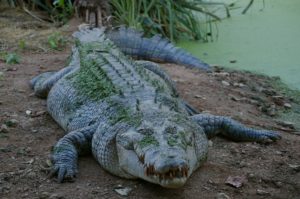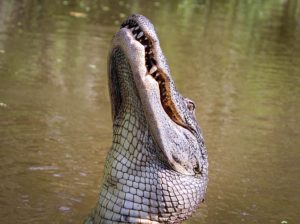
Ever have trouble differentiating these two giant reptiles? It wouldn’t be the first time it happened. Crocodiles and alligators look so much alike that it has caused confusion for some people, causing people to refer to crocodiles as alligators by accident and vice versa. Some people may even opt to use these words interchangeably because of how hard it is to find a difference.
But don’t be fooled, because despite having similar appearances at first glance, there’s much more different between the two when you actually look at the wider scope and include not just physical appearances, but other things like habitat, behavior, and even mating habits.
Read on to find out just what kind of differences these two reptiles actually have, and hopefully you’ll be able to stop accidentally referring to crocodiles as alligators as well.
Body
Crocodiles and alligators look very much alike in terms of body structure, especially being similar reptiles with methods that allow them to walk and crawl across the ground as well as swim in different bodies of water. They can both even hold their breath underwater for a good amount of time!
But their actual biology upon further examination is quite different. The most common thing that one looks at is their snout shape, being that alligators have broad, more rounded snouts, while crocodiles have longer and more narrow snouts.
But this does not necessarily apply to all species of crocodiles and alligators all around, as there are quite a good number of exceptions to the rule.
Luckily for us, there are a myriad of other less obvious but still telling features on bodies of crocodiles and alligators alike that one can pay attention to find out which is which.
For instance, an adult crocodile is able to grow up to around 19 feet long. In comparison, alligators can only grow up to a maximum length of around 14 feet. Of the two, this means that crocodiles are much larger. Though of course this doesn’t make it instantly easy to tell which is which. I doubt that a crocodile or alligator would allow you to approach it to measure its size and compare it to the known sizes of said reptiles.
For a more reliable comparison, look at their teeth. Alligators have an overbite, meaning that the teeth of their upper jaw fits outside the lower jaw. When their mouths are closed, only the teeth off the upper jaw can be seen. In comparison, the teeth of crocodiles interlock, meaning that teeth from both the upper and lower jaw can be seen when their mouths are closed.

Aggression levels
Obviously, one must never approach a crocodile or an alligator, as they are both wild animals and predators at that.
But when compared in aggression levels, crocodiles are much more likely to eat you than alligators. Alligators are relatively docile, as they usually only attack when they’re hungry or if they have been provoked. In fact, alligators are actually quite timid of humans, and would usually retreat to the nearest body of water if approached by a human.
Compare this to crocodiles, reptiles that usually attack humans even without being provoked whatsoever. They have a short temper and when it comes to predation, they have no qualms about eating whatever they can grab, whether it’s regular prey animals or humans.
Though there are also exceptions here: The American crocodile is considered to be a much more timid type than its alligator cousin, meaning that you are more likely to be attacked by an alligator than a crocodile in the US.
Habitat
Crocodiles are hardy creatures, and they can exist in both freshwater and saltwater. Alligators, on the other hand, much prefer freshwater environments. And yes, if you’re wondering, there are indeed places where an alligator and a crocodile can coexist together. One of them is Southern Florida in the US, where American crocodiles and American alligators both coexist.
Mating
To add on to the body structure of earlier, crocodiles and alligators can’t actually breed with each other. Despite their similar appearances, their genetics tell an entirely different story. You won’t really be able to tell because why would you? Crocodiles and alligators are particularly aggressive during mating season, and you certainly don’t want to be caught up in any of that.
But what about with their own species? Here, we see how crocodiles differ from alligators once more: While the offspring of female crocodiles can come from different mates, female alligators are more “loyal” in the sense that they usually only mate with the same male alligators for life.
Lifespan
Generally speaking, crocodiles have an average lifespan of between 70-100 years old. In comparison, an alligator has a lifespan of between 30-50 years.
But while they have differing lifespans, the way that they survive is the same. See, their bodies are actually made to never stop physically growing. This means that their entire life, they will keep on growing until they die. And that means that a 6 year old crocodile is practically the same as a 60 year old one.
Though this means that when they do kick the bucket, it’s usually because their body is so big while the crocodile or alligator is unable to feed itself to sustain its own body with nutrients, thus causing them to die of starvation, or disease.
It is not actually uncommon, for instance, for alligators to live up to 80 years.
